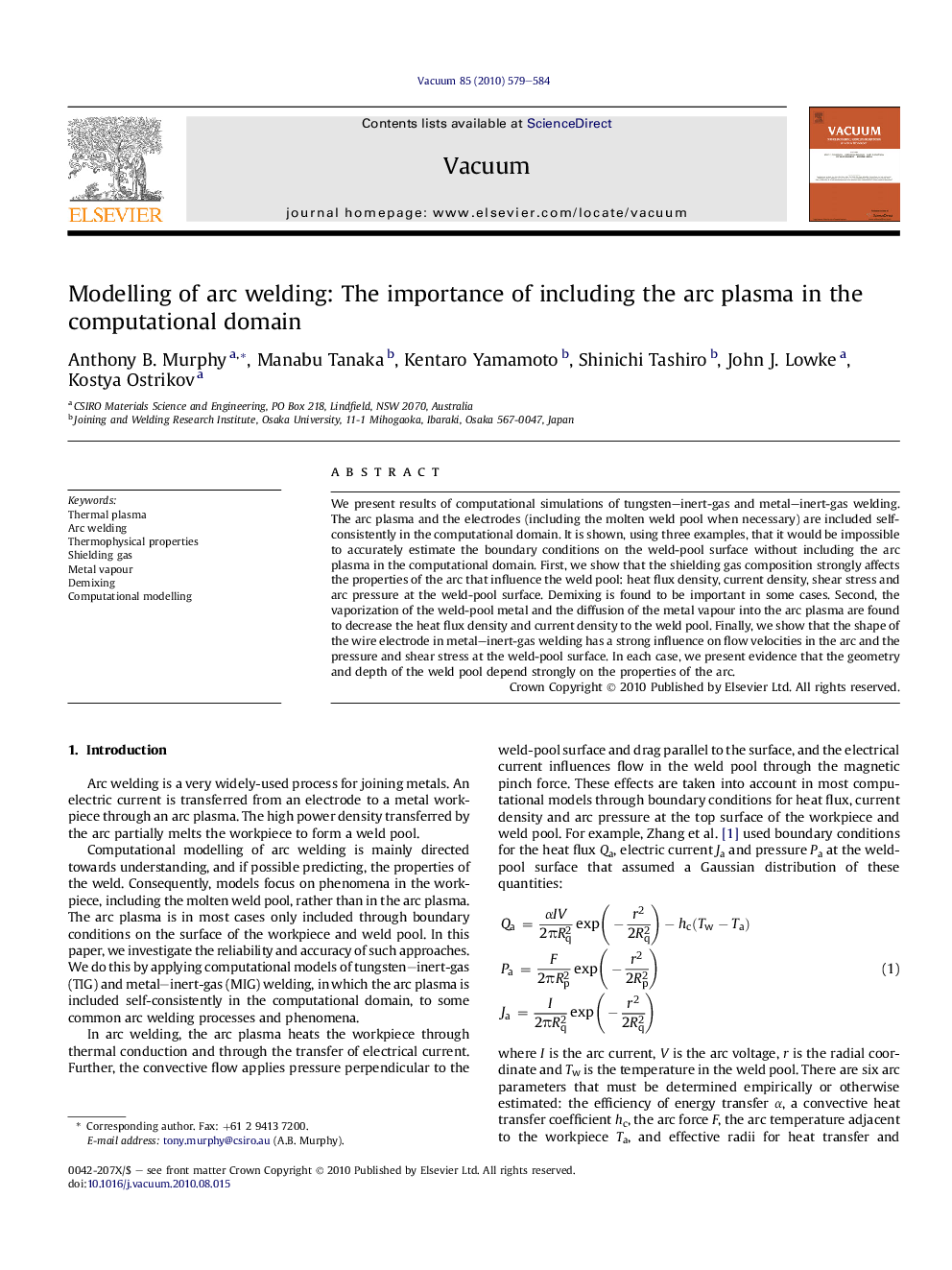| Article ID | Journal | Published Year | Pages | File Type |
|---|---|---|---|---|
| 1688954 | Vacuum | 2010 | 6 Pages |
We present results of computational simulations of tungsten–inert-gas and metal–inert-gas welding. The arc plasma and the electrodes (including the molten weld pool when necessary) are included self-consistently in the computational domain. It is shown, using three examples, that it would be impossible to accurately estimate the boundary conditions on the weld-pool surface without including the arc plasma in the computational domain. First, we show that the shielding gas composition strongly affects the properties of the arc that influence the weld pool: heat flux density, current density, shear stress and arc pressure at the weld-pool surface. Demixing is found to be important in some cases. Second, the vaporization of the weld-pool metal and the diffusion of the metal vapour into the arc plasma are found to decrease the heat flux density and current density to the weld pool. Finally, we show that the shape of the wire electrode in metal–inert-gas welding has a strong influence on flow velocities in the arc and the pressure and shear stress at the weld-pool surface. In each case, we present evidence that the geometry and depth of the weld pool depend strongly on the properties of the arc.
